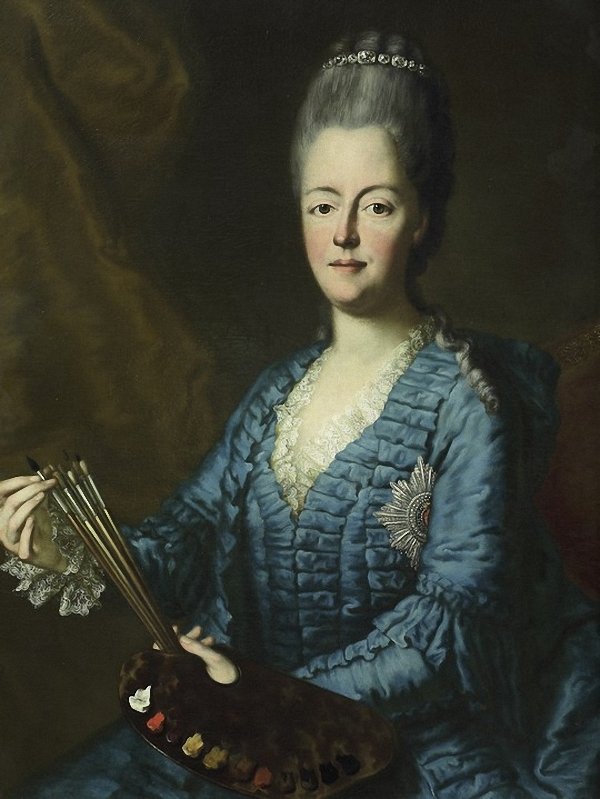The multi-talented Maria Antonia Walpurgis Symphorosa, Princess of Bavaria and Electress of Saxony, was a composer, performer, painter, poet, librettist, and patron of the arts, who also founded a textile factory and a brewery. We will be playing the Sinfonia from her opera Talestri at our concert at Redmaids School on 11th October and again at Henleaze Concert Society on 13th October.
Maria Antonia was born in 1724 in the Nymphenburg Palace, Munich, the fourth of seven children. Her father, then Elector of Bavaria, was later to become Holy Roman Emperor Charles VII, and her mother (also a composer) was Archduchess Maria Amalia of Austria. Not surprisingly, Maria Antonia received an outstanding education, particularly in the arts – painting, poetry as well as music. This is a self-portrait by her, painted in the 1750s:

In Munich, Maria Antonia studied music with the opera composers Giovanni Ferrandini and Giovanni Porta. Opera was to play a major part throughout her life. Celebratory opera performances were given to mark her birth and marriage. She composed at least two operas, wrote libretti for other composers, and performed as a harpsichordist and singer, taking the starring role in Court performances of her own operas.
In 1747, Maria Antonia moved to Dresden to marry her cousin Friedrich Christian, heir to the Electorate of Saxony, and also a talented musician. They went on to have nine children, of whom seven survived infancy. She continued her musical studies in Dresden, but during the Seven Years War took refuge in Prague and then back in Munich, where Talestri was premiered in 1760. Three years later her husband acceded to the throne of Saxony and she returned to Dresden. Friedrich Christian died of smallpox just ten weeks later, and was succeeded by their twelve year old son Frederick Augustus. Maria Antonia, with her brother-in-law Franz Xavier, ruled as joint Regent until her son reached the age of 18 at the end of 1768. It was during this period that she founded a textile factory and a brewery.
Cultural life at the Dresden Court declined after the death of her husband, and Maria Antonia’s many letters to Frederick the Great of Prussia chart her increasing sense of personal and artistic isolation during this period. She was not a fan of the new ‘Neapolitan’ style of opera that was coming into vogue. She appears to have composed less, although an overture for orchestra dates from around 1770. She died in Dresden in 1780, aged 55.
As well as the two confirmed operas – Il trionfo della fedelta [The triumph of fidelity] (1754) and Talestri, regina delle amazzoni [Talestri, Queen of the Amazons] (1760) – Maria Antonia is known to have written many sacred and secular songs and cantatas, and several of her poems were set to music by other composers. Frustratingly, there are many other works in manuscript in Dresden which bear Maria Antonia’s name but cannot be authenticated as her compositions (as opposed to simply belonging to her).
The operas (both with texts by Maria Antonia herself) were very popular in their time, and were published by Breitkopf, translated into several languages, and performed across Europe. Charles Burney was introduced to Maria Antonia at Nymphenburg in 1760 during rehearsals for Talestri, and later went on to describe her as “a poetess, a paintress, and so able a musician that she plays, sings and composes in a manner Dilettanti seldom arrive at.” It has been suggested that Talestri, with its depiction of a benevolent, thoughtful ruler coming of age as a political leader, could be a semi-autobiographical rendering of Maria Antonia herself.
